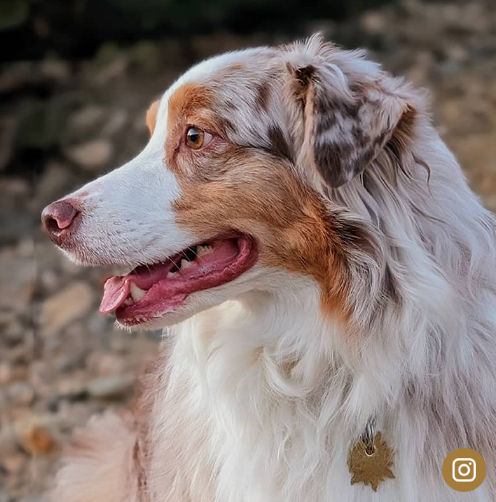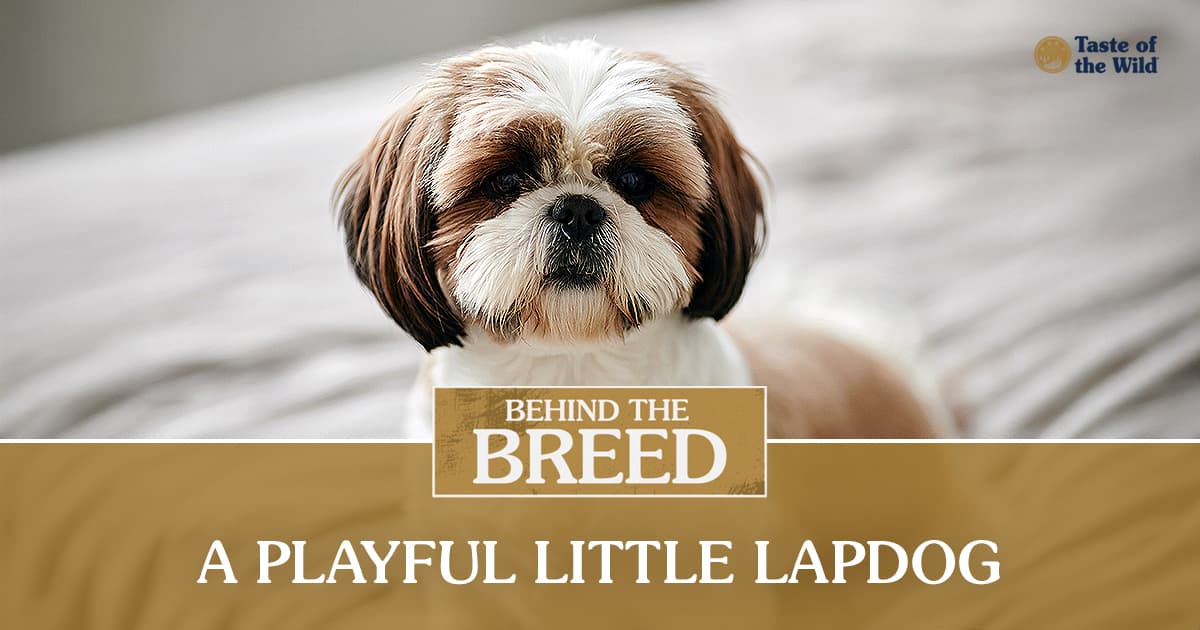Behind the Breed: Pugs
Category: Behind the Breed

Have you ever wondered about the origins of a dog breed? In our “Behind the Breed” series, we dive into the history, personality and physical appearance of a particular breed. We’ll also cover some of the FAQs about the breed and maybe a few fun facts, too!
With their wrinkled face, curly tail and big eyes, pugs are among one of the world’s most recognizable dog breeds. These small, affectionate dogs have a rich history as loyal companions to Chinese emperors and members of royal families across Europe. Today, this ancient breed remains a favorite pet for families thanks to their loving nature, playful character and unmistakable charm.
Pugs: A Royal Dog Breed
The pug dog’s story began in ancient China, where emperors adored them for their calm temperament and loyal nature. Centuries later, Dutch traders brought the pug to Europe, where it became the official dog of the House of Orange in Holland, and a favorite breed of Queen Victoria in the United Kingdom. Whether living in a palace or a city apartment, pugs bring the same joy today that they once offered royalty.
Pug Temperament and Personality
Pugs are affectionate, loyal and endlessly playful. Their friendly temperament makes them wonderful companions for children, adults and other pets. Often called “shadows,” they love staying close to their people and are great family dogs.
These toy dogs are known for their sense of humor and their love of attention. They’re social, curious and adaptable, thriving equally well in apartments or larger homes. Pugs are eager to please but can be stubborn, so gentle consistency works best. They are easy to train when rewarded with praise, patience and treats. Because they are a brachycephalic breed and can have trouble breathing (more on that later), they only need short daily walks or indoor play sessions to meet their exercise needs.
Pug Colors and Grooming Requirements
A pug’s coat can come in several shades. The most common colors are fawn and black, though apricot fawn and silver coats also appear. Fawn pugs have a tan body with a black mask and floppy ears, while black pugs have a glossy coat that highlights their expressive eyes and distinctive wrinkles.
The skin folds and wrinkles of pugs require special care. Moisture trapped in these areas can lead to skin problems, so it’s important to gently clean them after meals or playtime. Many pet parents use grooming as a bonding routine that keeps their pug relaxed while promoting healthy skin.
Do Pugs Shed?
Yes, pugs shed quite a bit. Though their coat is short and smooth, their double coat releases fur year-round, with heavier shedding during warm weather and humid seasons. Regular grooming with a soft brush or grooming mitt helps remove loose hair and keeps their coat in great condition. Regular grooming also gives owners a chance to check for skin allergies, eye irritation or other health issues early.
Common Pug Health Problems
Like shih tzus and French bulldogs, pugs are a brachycephalic breed; their short muzzle and flat face can cause breathing issues and make it difficult to get enough oxygen in warm or humid weather. Their facial structure can lead to snoring, loud breathing and difficulty regulating body temperature. Pug owners should limit outdoor activity during hot weather to prevent overheating.
Other breed health concerns include obesity, eye injuries, hip dysplasia, allergic skin disease, back problems and dental issues. Routine vet visits, careful weight management and high-quality dog food can help reduce risks.
How Long Do Pugs Live?
The average pug lifespan is around 12 to 15 years, though their life expectancy depends on diet, exercise, environment and genetics. With proper care, many pet pugs enjoy long, healthy lives. Watching for early signs of health problems, such as obesity, breathing issues or hip dysplasia, helps prevent larger issues later.
What Is the Typical Pug Weight Range?
Most adult pugs weigh between 14 and 18 pounds. Their compact, muscular build and broad chest give them a sturdy appearance, but it’s easy for them to gain weight quickly. Short, gentle walks are enough to meet a pug’s exercise needs. These small dogs do not require vigorous activity, but consistent movement keeps their muscles strong and their weight stable.
Keeping a pug at a healthy weight helps prevent obesity-related conditions such as joint strain, heart disease and breathing difficulties. Pug owners should feed measured portions, avoid excess treats and schedule regular walks. A veterinarian can recommend portion sizes for the dog’s age and activity level. Because pugs are small dogs with big appetites, owners should watch weight gain and adjust feeding as needed.
Are Pugs Smart?
Pugs are intelligent, curious and emotionally aware. They’re eager to please and respond well to short, positive training sessions. Pugs may show occasional stubbornness, and they need mental stimulation (e.g., puzzle feeders) and playtime to help prevent boredom.
Their intelligence shines in their ability to read human emotions, an important reason they’re such loyal companions. With training and structure, they develop confidence, focus and strong character.
Pug Puppies and Training
Pug puppies are lively, curious and playful. Training from an early age helps a pug puppy grow into a well-behaved companion. Positive reinforcement works best, as these puppies are affectionate and eager to please. Socializing pug puppies with children, other dogs and new experiences builds confidence and reduces stubborn behavior. Gentle crate training and daily leash walks teach good habits.
Is a Pug the Right Breed for You?
From ancient palaces to modern family homes, the pug breed remains a true companion. Their gentle temperament, playful character and loyal hearts make them ideal for families, singles and seniors alike. Pugs are affectionate, adaptable and endlessly endearing, a perfect reminder that sometimes the best things really do come in small, curly-tailed packages.
The information in this blog has been developed with our veterinarian and is designed to help educate pet parents. If you have questions or concerns about your pet’s health or nutrition, please talk with your veterinarian.




